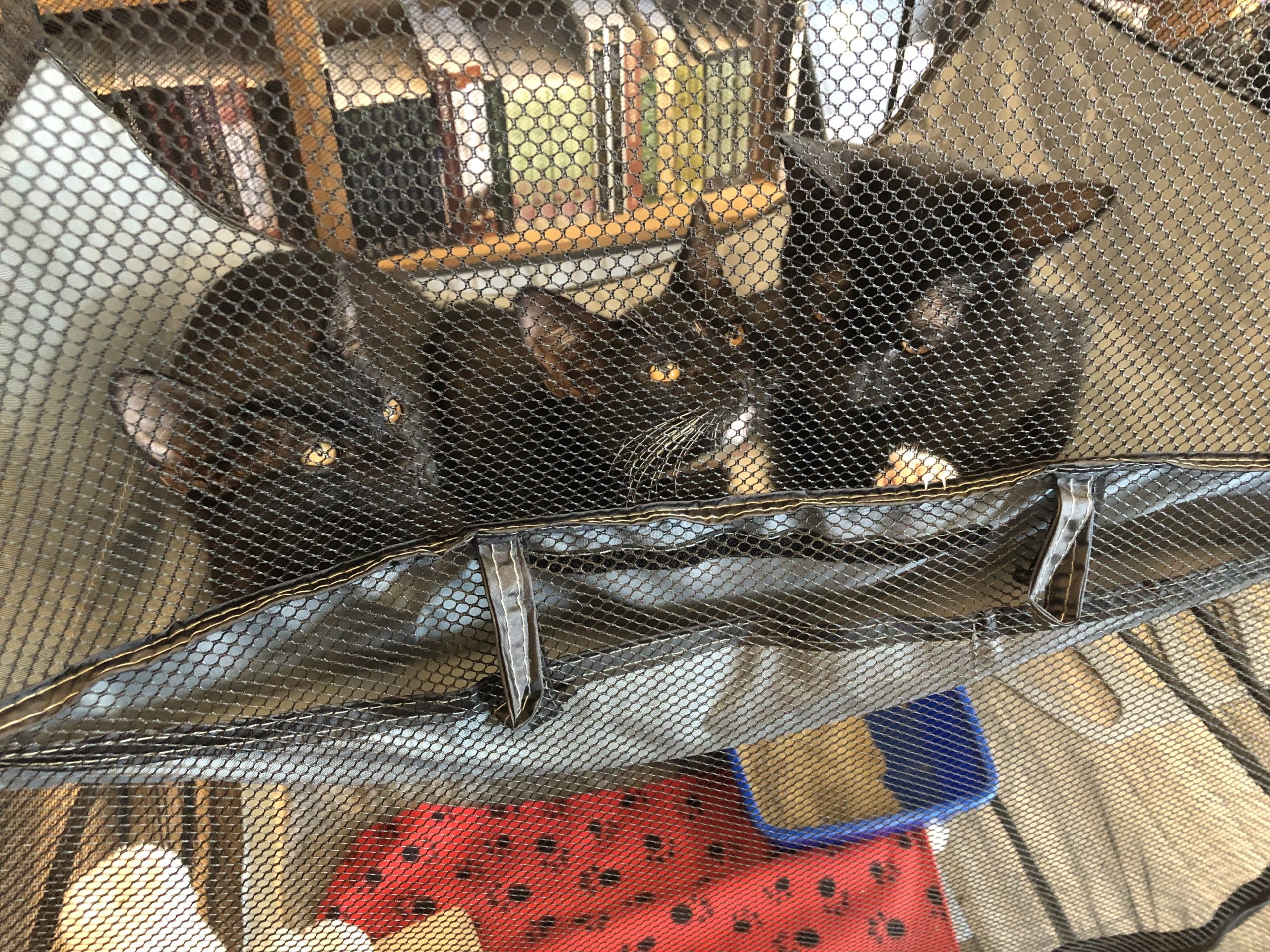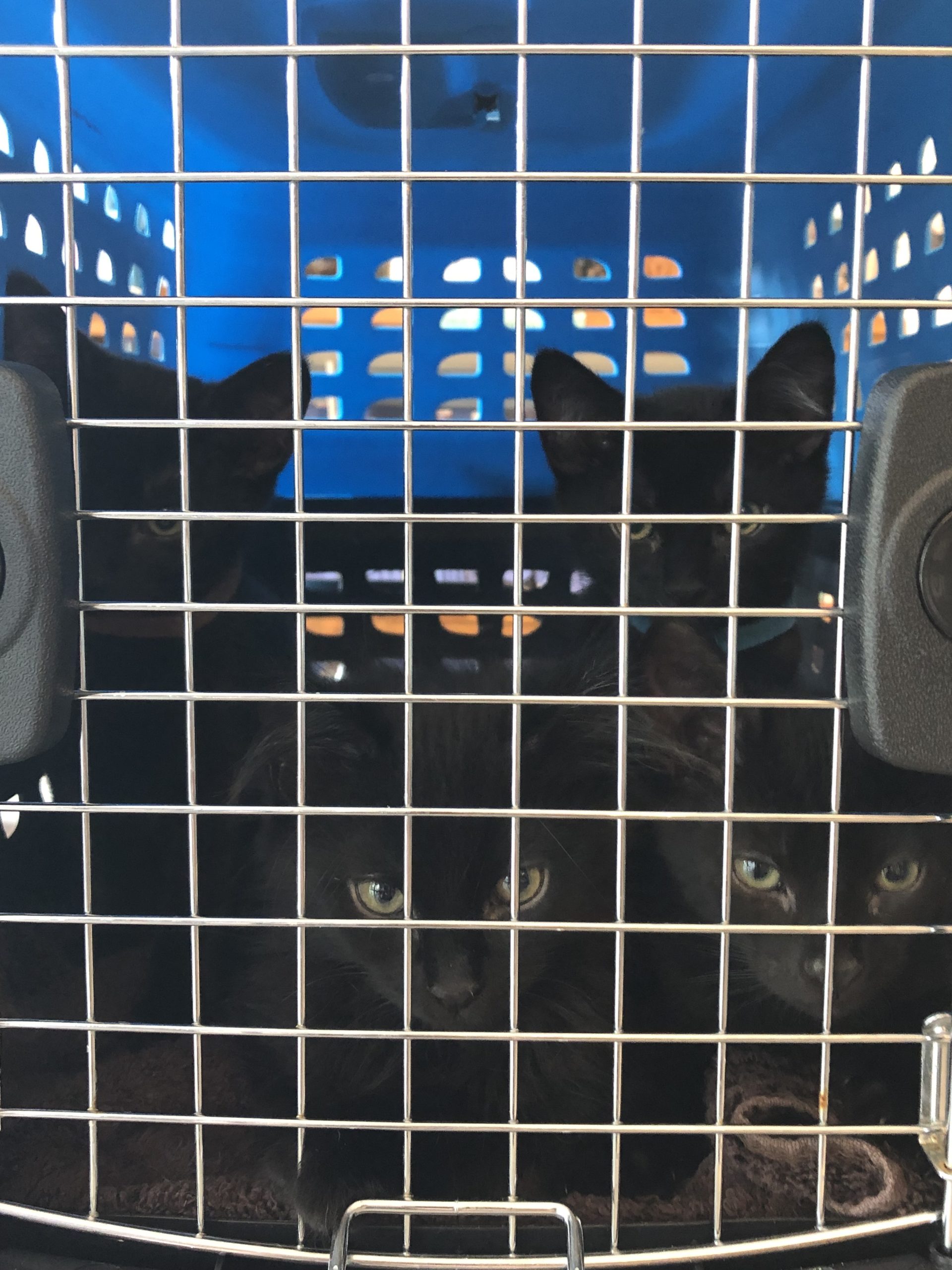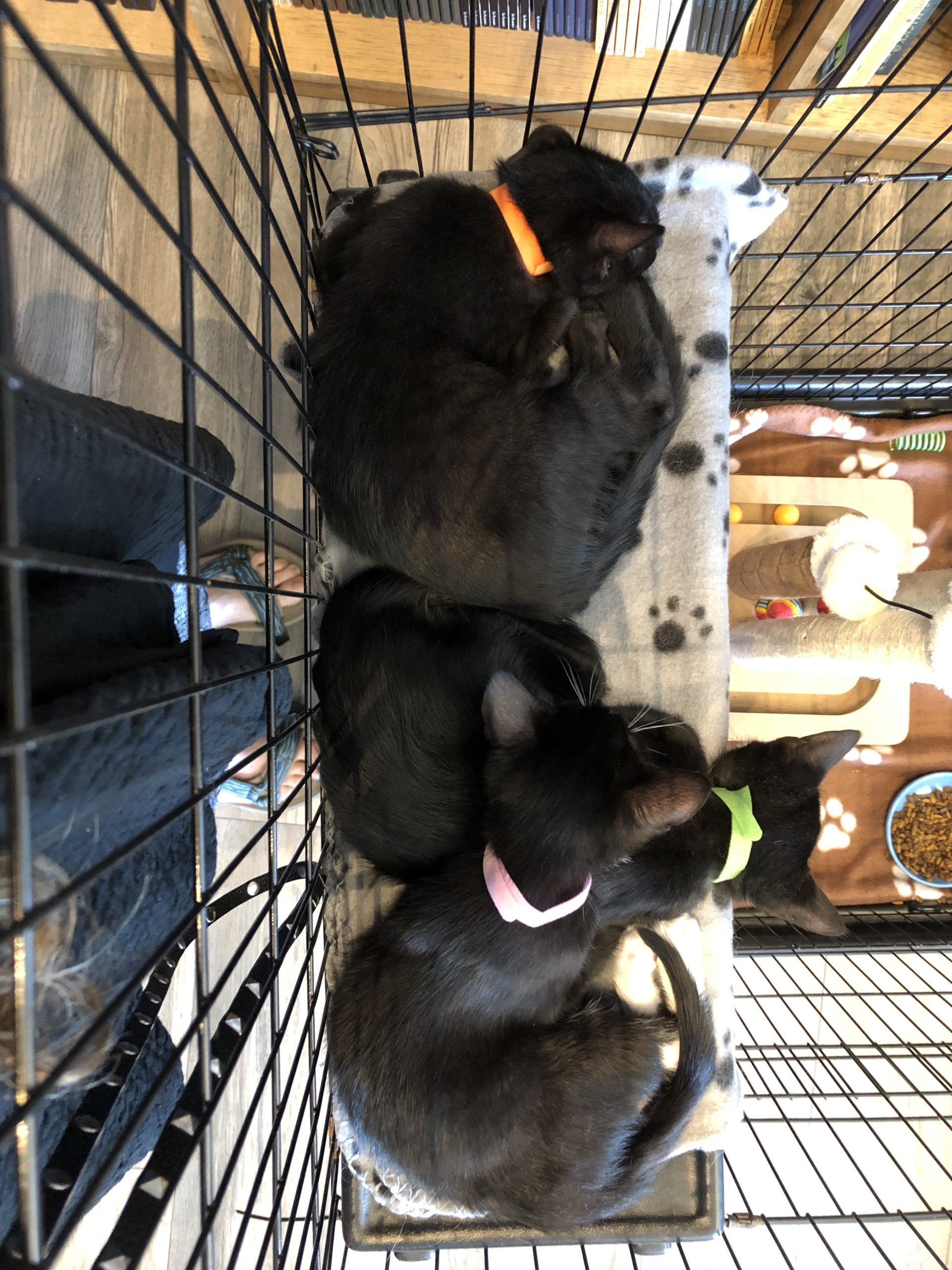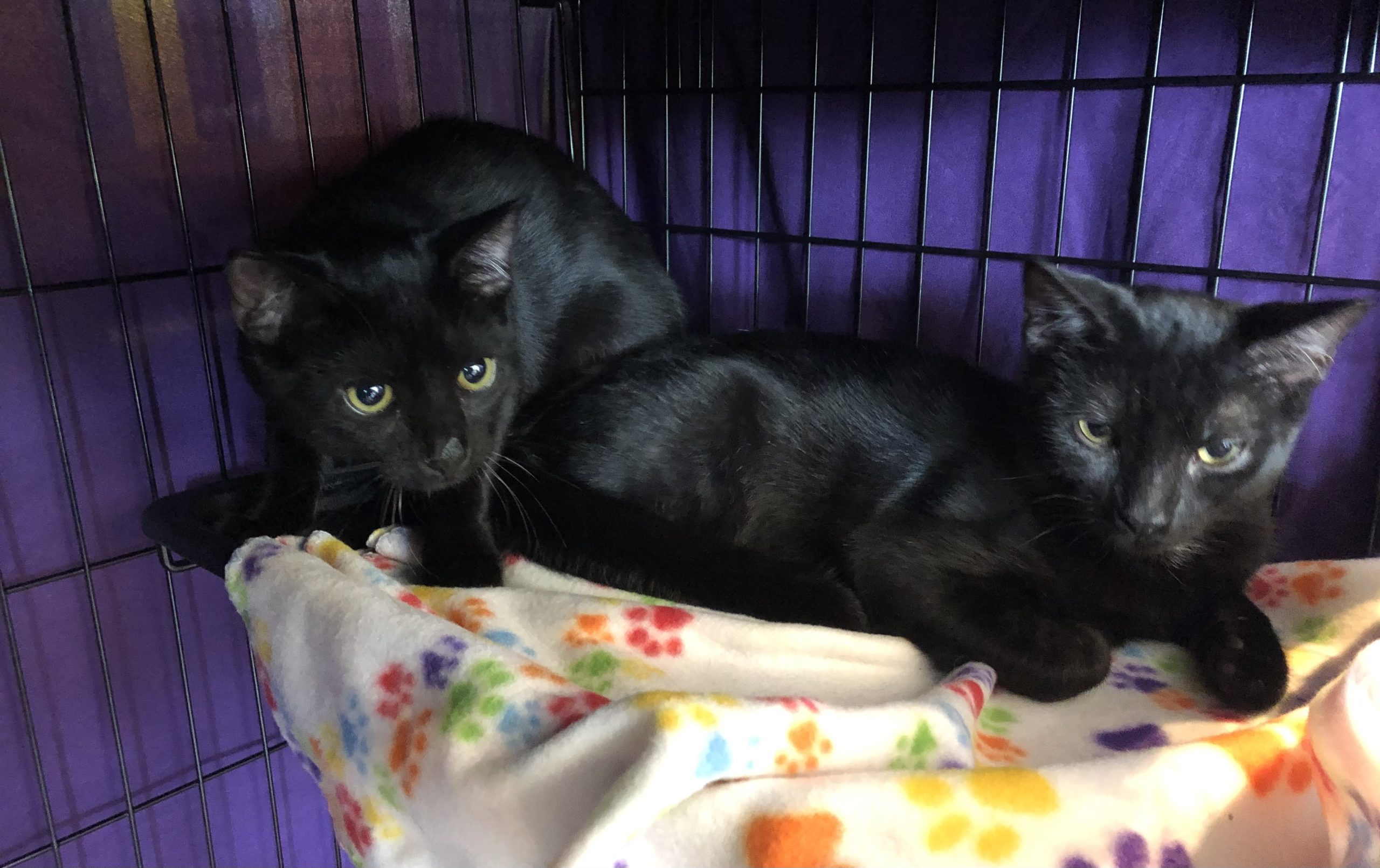ASHEVILLE, N.C. – With October on the doorstep of the seasonal threshold, Pagans and Witches are preparing for annual celebrations by decorating for Samhain and Halloween. One of the staples of seasonal spooky décor is the black cat.
The history of cats and black cats, in particular, is linked to magic, Witches, and otherworldly phenomenon is long. Whether a black cat was considered good or bad luck was dependent on not only what part of the world it was in but also the time period. For instance, in both the Middle Ages and in colonial America, black cats were linked to bad luck, dark magic, and naturally, malevolent “witches.”
It is only within the last decade or so that an effort has been made to rehabilitate the reputation and image of black cats. The reality is that black animals–be they cats or dogs–have a much lower adoption rate from shelters and rescues than other colored animals. This places them at greater risk of being long-time residents at shelters and rescues and more likely to face euthanasia.
The genetic markers that produce cats with black fur are some of the most prevalent, so the chances of any litter having at least one black cat in it are higher. Unfortunately, even if a litter contains just one lone black kitten, that kitten is very likely to be the last to be adopted–if it gets adopted at all.
Hannah Soboleski, the Executive Director of Binx’s Home for Black Cats is trying to change not only the odds of black cats finding permanent homes but also improve their overall image and the way they are perceived. Binx’s is a North Carolina nonprofit and federal 501(c)(3) black cat rescue located in Asheville.
Soboleski outlined how she got her start in rescue work, “I have been rescuing cats for as long as I can remember in one way or another. I’ve always wanted to be a veterinarian that specializes in cats but since I was a single mom and DVM school is expensive, I started fostering black cats and kittens with local shelters. Eventually, I started realizing there was a need for a rescue that specializes in pulling black cats and kittens from shelters, rehabilitating them, and finding them loving homes.”
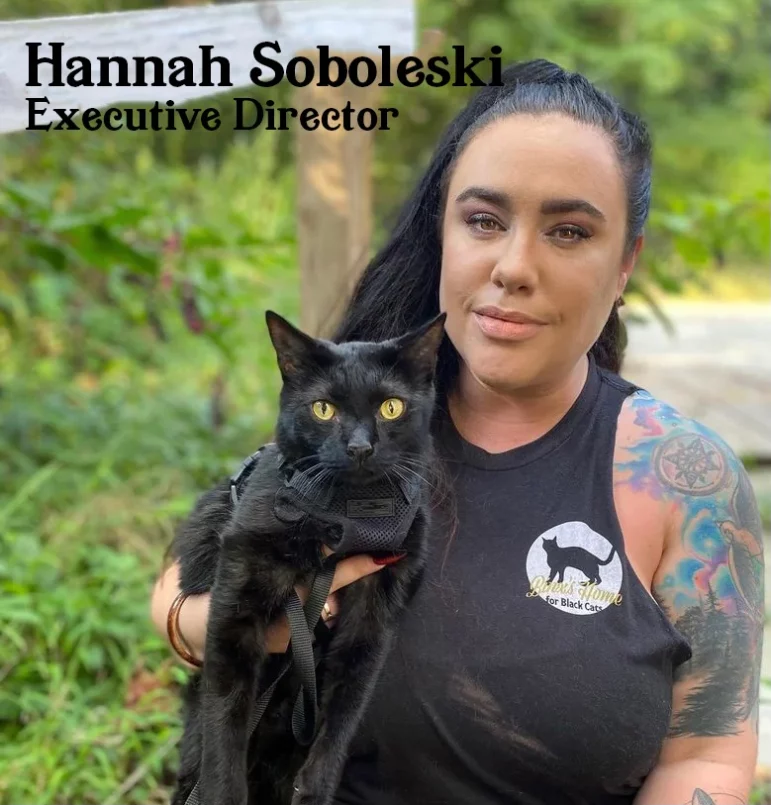
Hannah and Binx Pyewacket – courtesy
The namesake of Soboleski’s rescue operation is Binx Pyewacket, and she explained how she ended up adopting him, “I foster-to-adopted Binx Pyewacket from AHS [Asheville Humane Society] 6 years ago. He was the only black kitten in his litter and he was really sick. Everyone else got adopted and I had recently lost my senior kitty, Church, so I decided Binx should just stay with me.”
While shelters and rescues are often lumped together and the terms even used interchangeably, how they function is a bit different. Shelters often receive state funding and have a physical structure(s) that houses the animals they intake and offer for adoption. Rescues on the other hand often rely completely on fostering to house the animals they take in and seek to place in loving “furever” homes.
And there are other differences in how they operate. For instance, the goal for many shelters is to simply avoid euthanasia and find a place for the animals they have taken in. While they may be better funded and staffed than small independent rescues, they also manage a much larger flow of animals that have been surrendered, abandoned, or even confiscated.
Rescues, and especially rescues that specialize in a particular type of animal like Binx’s does, have more time to find the best fit for the cats they rescue when it comes to adoption.
The statistics on shelter and rescue animals can be confusing and often seem to not add up, but Soboleski explained, “Shelters and rescues are required to publicly report their intake, live outcome, and other outcome numbers for the year. Intake and live outcome numbers are pretty self-explanatory but what qualifies as a reportable ‘other outcomes’ depends on how an animal came into the organization.”
She continued, “When a cat is going through intake, shelters and rescues will assess the condition of the animal and notate that condition in their system prior to the vet seeing them. If an animal comes into the rescue with a terminal illness, is assigned as sick, and then eventually succumbs to injuries or is humanely euthanized for their illness, even though that is technically an ‘other outcome,’ that is not typically reported publicly because the organization is not at fault for that animal’s death. If an animal comes in and is deemed healthy and THEN euthanized, that would count against the organization in the ‘other outcomes’ category.”
She went on to illustrate how these numbers can reflect a rescue’s reported numbers, “So, for instance, let’s say a rescue had an intake of 100 cats last year, 85 live outcomes (adoptions or transfers), and 10 other outcomes, you might ask what happened to the other 5 intakes? Just by looking at those numbers, I would assume that that organization had 5 extremely sick or injured animals that they had to euthanize and so those numbers are not typically included in that reporting.”
It’s important to note that once a rescue or shelter lists an animal as being healthy upon intake if it is later determined to have a health issue that requires euthanasia, it is recorded in the “other outcome” category. Even when animals are checked out by a vet before being added to the system, an underlying health issue can go initially undetected.
Last year, Binx’s took in 75 cats and kittens and managed to place 53, with 16 still in foster care, and 6 listed as having other outcomes. Overall, this accounts for a 92% live outcome. So far this year they took in over 180 cats and kittens.
Soboleski told TWH, “And those 6 kitties had terminal illnesses that led to their eventual euthanasia. Most shelters and rescues do not include those numbers in their reporting (and it’s not required that they do so). We only included them for transparency and even with those numbers, we’re proud of the 92% live outcome rate.”
Nationally, the numbers so far in 2022 as of the end of August tracked by the Shelter Animal Count which draws its data from over 1,050 shelter and rescue organizations nationwide show a combined dog and cat species gross intakes number of 892,776, net community intakes of 729,134, with 617,278 of those resulting in a live net community outcome. Over 95,000 animals had non-live other outcomes.
Of those community net intakes over half, 394,461, were cats. Exactly how many of those cats were black is unknown.
The stats for NC were: gross intakes:32,040, net community intakes 25,347, total live outcomes 24,543, and net community live outcomes 20,381. Those numbers seem pretty awful when it comes to non-live outcomes (5,201).
Soboleski pointed out that, “North Carolina is #3 for the highest euthanasia procedures in the U.S., so what we do is incredibly important here.”
While black cats make up a large portion of the cats in shelters each year, and as a result have a greater chance of being euthanized, Soboleski noted, “Black cat adoption stats have actually increased over the last few years, though they are still lower than white or even orange cats.”
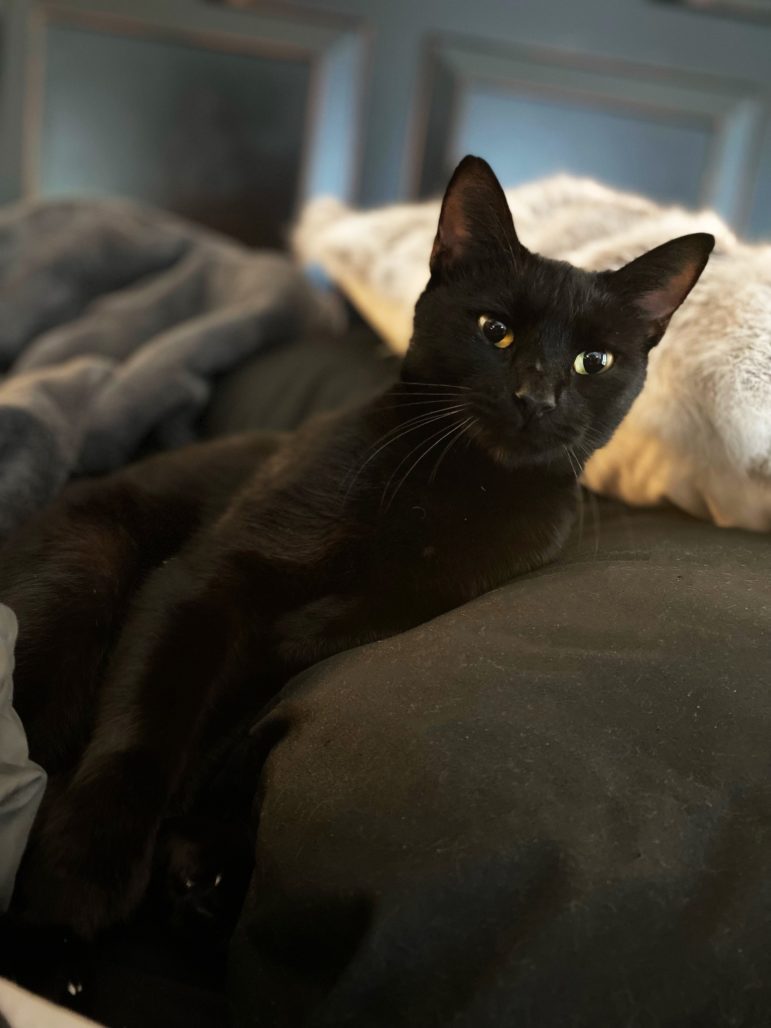
Hecate, 2-year-old, female – available for adoption – Image courtesy of Binx’s
Finding the right place to partner with for adoption events is important and can make all the difference in how successful an adoption event ends up being. Unlike the more mainstream population who might be looking to adopt a cat, Witches, Pagan, Heathens, and polytheists do not have the same prejudices when it comes to black cats.
In fact, Pagans and Pagan-adjacent folks frequently relate to cats in ways that perhaps the average non-Pagan would not, and often view cats (and other animals) more as magical partners, especially if they work with a deity, like Bastet or Freyja that has a strong affiliation with felines.
TWH asked Soboleski if this was part of why she initially decided to try an adoption event at Asheville Raven & Crone.
She told TWH, “Absolutely! My goal is to rescue, rehabilitate, and find loving, furever homes for as many black cats and kittens as I possibly can. Like anything else, finding the right niche for our rescue was so incredibly important when we were first starting out and it’s even more important now that we’re a little bigger because we have a community that supports what we do, who we are, and our mission of spreading the magic of black cats and fostering a community that loves and protects them.”
Over a million animals each year end up in shelters for a variety of reasons and the problem does not just have one source, and certainly does not have a simple answer. However, one way that all pet owners can help is to make sure their furry friends are spayed and neutered. And to educate themselves on what constitutes proper care for any animals they are considering adopting, what practices are the best for addressing a range of issues and being mindful of the time, energy, and attention the addition of a new furry family member is likely to entail.
Soboleski has this to say about when someone is considering adopting:
“When you go to adopt a new cat (or dog!), take the time to meet the quiet ones, the scared ones, the ones that need a little reassurance, the ones with missing limbs, the ones with illnesses, injuries, or a traumatic past. Like people, those are the cats that are judged by the world as not being worthy, all over something that they have no control over.”
“Cats are sentient beings with the ability to feel and process emotions, read your energy, empathize with your thoughts, and even protect and heal you in your time of need. If we, as humans, could realize that we also have all of those abilities, then it’s easier to wrap our heads around the cat-human relationship being a mutually beneficial one,” she pointed out and continued, “None of us are perfect. We all have scars and fears and bad habits, so why do we expect our pets to be perfect?”
Soboleski concluded, “If you want a cat that will help you heal, maybe try looking for one that needs help healing too. I think you’ll find, more often than not, that those kitties are just as loving and willing to connect with you. They just need to know that you’re willing to put in the work to build that relationship with them instead of just expecting it outright.”
On Saturday, Asheville Raven and Crone (ARC) will host a fundraiser for Binx’s that will feature a raffle, tarot readers, a viewing of Hocus Pocus 2, and of course, several black cats that are accustomed to people and crowds.
ARC will also be hosting Binx’s for their monthly Black Cat adoption event: Find Your Familiar on October 15. So if you’ve been looking for a certain special furry someone, Binx’s might just have the black cat you’ve been looking for! All of the cats and kittens available for foster, adoption, and pre-adoption are viewable on Binx’s website.
The Wild Hunt is not responsible for links to external content.
To join a conversation on this post:
Visit our The Wild Hunt subreddit! Point your favorite browser to https://www.reddit.com/r/The_Wild_Hunt_News/, then click “JOIN”. Make sure to click the bell, too, to be notified of new articles posted to our subreddit.

